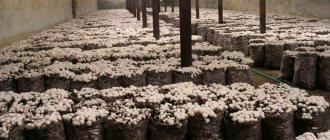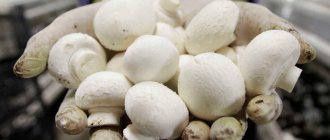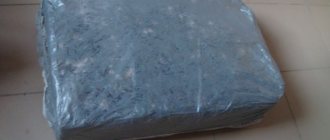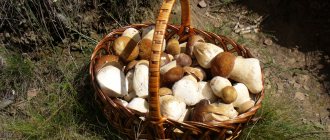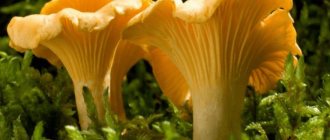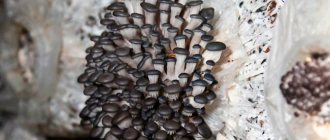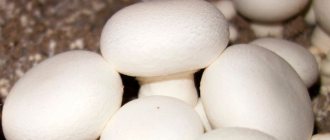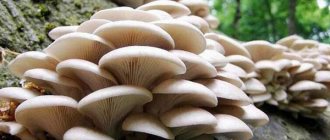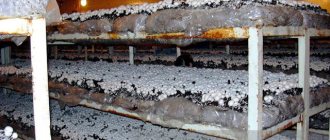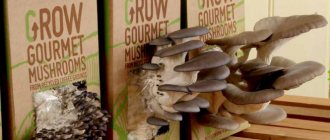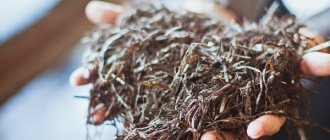Growing chanterelles at home is a great way to provide your family with a tasty and healthy product for a long time. This can be done if you have patience and attention. First you need to find out what the characteristics of the growth and development of these mushrooms are, what the rules of planting and care include. The main difficulty is that chanterelles are a type of mycorrhizal fungi and for proper development they need an ally tree. Therefore, growing chanterelles in a box will be unsuccessful.
Why are chanterelles grown at home?
We grow chanterelles at home.
Instructions for a beginner There are three main reasons why these mushrooms are grown:
- Business. Namely, sales to stores, supermarket chains and independent distribution
- Home cooking. Fans of mushroom cuisine sometimes grow this mushroom at home and delight themselves in the winter with the taste of fresh mushrooms, without fear of possible industrial impurities
- Use in folk medicine. Chanterelle has an excellent composition that helps in the treatment and prevention of various diseases. That is why healers and folk craftsmen grow it at home and use it to prevent many diseases
Let's look at each reason in more detail!
Business at home
We grow chanterelles at home.
Instructions for a beginner Let's immediately say that it is almost impossible to do this in an apartment. You need at least 15 acres of land with the necessary conditions for growing:
- Suitable soil
- Presence of forest trees
Or, you need greenhouses and racks installed in them for growing chanterelles.
There are several negative aspects to growing them for business, namely:
- Seasonality (almost impossible to cultivate in a greenhouse in winter)
- Long payback period (it will be possible to collect the first harvest from sowing no sooner than in two years)
- The mushroom is grown in large quantities on an industrial scale
- A large number grows independently, in almost all forests of Russia
- Special conditions and equipment required
Based on this, we can conclude that it is worth growing it in large quantities, only in this case does this business make sense. The bulk of “store-bought” chanterelles are specimens that were raised on farms. The process of cultivating this mushroom is too thorough and expensive, so production on an industrial scale is carried out by farms, not factories.
For cooking and for use in folk medicine
We grow chanterelles at home.
Instructions for a beginner We, as well as many mushroom pickers, have controversial opinions on this matter. We believe that it is easier to collect them during the season and freeze them, or prepare them for later use using other methods. This activity can cause you too much effort and trouble.
But, if you have firmly decided for yourself that you will grow chanterelle mushroom at home or in the country, then below we will tell you step by step how and what you need for this.
As for traditional medicine, for these purposes the option of growing in a greenhouse will be the most correct for the reasons:
- The harvest will be 100% high quality
- You can't get poisoned by mushrooms from a greenhouse
- Chanterelles from a greenhouse will not be able to accumulate toxins.
For all these reasons, the greenhouse is a more suitable growing area for use in traditional medicine.
General characteristics of mushrooms
Chanterelles are edible mushrooms. Representatives of the chanterelle family number 60 species, most of which can be eaten and also used for therapeutic purposes.
The peculiarity of the appearance of chanterelles is the absence of a pronounced cap. The latter is almost completely fused with the leg. Outwardly, they resemble an umbrella turned outward.
The color of the chanterelle's mushroom body ranges from light yellow to pronounced orange. The cap is smooth, with wavy edges, depressed in the middle. Its diameter can reach 12 cm. The stem of the mushroom tapers downwards. The mushroom has a slightly sour aroma.
Chanterelle bears fruit en masse, usually growing in whole groups. It is found in the period from June to October in all forest zones of Russia. It grows in especially large quantities after heavy rains.
The bright color of the mushrooms makes them quite easy to find. In addition, edible species of chanterelles usually grow in large families, so when going into the forest after rain, you can count on a large harvest of these mushrooms.
The most common variety of this mushroom is the common chanterelle. The most common types of chanterelles are true, common and tubular.
Chanterelles include:
- amino acids;
- chitinmannose;
- vitamins A, B1, B2, C, E;
- zinc;
- calcium;
- potassium;
- chromium;
- iron;
- cobalt;
- trametonolinic acid.
The chanterelle also has a double - a conditionally edible mushroom, which is still not recommended to eat. To distinguish a real chanterelle from a false one, you need to pay attention to the following features:
- edible species always grow in whole groups;
- when pressing on the flesh, the chanterelle changes its color, and the false chanterelle retains the same color;
- Edible mushrooms have a thicker stem;
- Inedible chanterelles have an unpleasant, repulsive odor and bad taste.
Edible chanterelles are suitable not only for preparing dishes from them: with the help of such mushrooms various diseases are treated.
Choosing the right place
We grow chanterelles at home.
Instructions for a beginner To cultivate this mushroom at home, you need to look at the growth conditions in the forest:
- They grow up only in families, often large ones
- High humidity is required
- Most often they grow in coniferous and mixed forests, in birch groves. Pine trees grow best
- Select bedding from pine needles, accumulations of moss, rotten trees and fallen leaves
- They never grow in a dry place
- The area should be dark (shady)
- There shouldn't be too much moisture either.
What conditions are needed for growing on a plot (dacha)?
We grow chanterelles at home.
Instructions for a beginner In an open area during the fruiting season, cultivation is complicated by the nature of the growth of the fungus. To get a rich harvest you need pine, oak, fir or spruce.
Without these, you can bring nutritious soil from under these trees to your site and plant them for further successful growth. An additional positive benefit from this is the transformation of the appearance of your site.
The weight necessary for the correct and high-quality growth of chanterelles without special feeding comes down to the choice of the tree on which it will grow, and timely and proper watering.
Selection of planting material
If you decide to grow chanterelles at home, you need to be patient, as this process is quite lengthy. The first harvest can be expected only a year or two after sowing.
But the result is worth it, all that remains is to choose the optimal method of planting chanterelles on the site. There are several of them, let's try to understand them and identify the advantages.
First harvest of chanterelles
Any planting begins with the preparation of material, and mushrooms are no exception. The peculiarities of breeding chanterelles and the secret of their successful cultivation lie in choosing the same type of tree near which the planting material was taken.
You need to start, first of all, from the type of future symbiont tree that is in your garden, and then go to a nearby forest belt where chanterelles can grow. Next, you should look for a partner tree infected with fungi that exists on your territory. The choice should fall on a healthy, strong tree, all parts of which, from the trunk to the crown, will be green and without drying areas.
Algorithm for landing in an open area
We grow chanterelles at home. Instructions for a beginner
- Choose the right place and tree/plant the right tree correctly, using forest soil
- Plant mycelium or plant spores
- Maintaining a constant level of humidity
When sowing, choose slightly overripe chanterelle caps. You can break them into medium-sized pieces and simply scatter them under the tree. Or, on the advice of experienced mushroom growers, soak them in water for a day, and then water the planting site with this solution.
Successful growth is determined only by timely watering and maintaining the required level of illumination.
The most reliable and correct way is to dig up the mycelium from the forest and plant it on your site. This must be done with the utmost care, otherwise the work will be useless:
- Find a mycelium in the forest and carefully dig it out
- Bring it to your site along with forest soil, which must be taken there
- Dig holes under a suitable tree in your area. Depth up to twenty centimeters (size, in this case, does not really matter, most importantly, no less than 15x15).
- Place the mycelium along with the forest soil and cover it with moss or fallen leaves with pine litter
- Maintain the same humidity and lighting conditions as during normal planting.
If the above points are followed correctly, the harvest can be harvested already in the middle of next summer. The more myceliums you manage to plant under suitable trees, the greater the harvest you will reap on your site.
Spore sowing method
- Collect caps . Be sure to cut them from trees of the same species on which you plan to infest. Capture some of the land in which the chanterelles grew;
- Wait a few days until the caps begin to wilt . Place them under the symbiont tree, cover with soil brought from the forest;
- Maintain stable soil moisture . Don’t let it dry out, but don’t overdo it with moisturizing: the soil absorbs the required amount of water quickly, but keeping it on the surface for a long time is a sign that it’s time to stop.
We drop you off in the apartment
We grow chanterelles at home.
Instructions for a beginner The chanterelle mushroom did not succumb to cultivation in an apartment. Unfortunately, they reproduce only under certain conditions. Otherwise, you and I could see a picture of hundreds of them being sold in markets and in places where mushroom pickers usually display their products.
Some folk craftsmen were still able to grow this mushroom on their balcony, but in very small quantities and only once. The mushroom crop failed to sprout again.
Growing in a greenhouse
We grow chanterelles at home.
Instructions for a beginner If you still firmly decide to grow chanterelles, then our editors have prepared for you detailed step-by-step instructions for cultivating this mushroom in your greenhouse. Following them, beginners will also not have problems.
Preparing the greenhouse
There is no need to build or buy a new greenhouse. An old greenhouse is suitable for cultivation, in the soil of which peppers, cucumbers or other vegetables or herbs were previously grown. To use an old greenhouse, you only need to install special shelving.
Additionally you will need:
- Install comprehensive lighting, high-quality ventilation and install an air conditioning system
- Made from chopped straw, dry grass, sawdust, manure, superphosphate with the addition of a small amount of water and gypsum
- Using fabric devices or mesh, create partial darkness. This manipulation will prevent sunlight from damaging the mycelium, and the compost will better maintain the required level of moisture.
- Provide the greenhouse with a humidity of at least 90% by installing an irrigation system
Expensive automatic ventilation and watering equipment is suitable for those who still want to cultivate chanterelles for commercial purposes. Pursuing the goal of providing your family and yourself with valuable and tasty mushrooms, you should still refrain from expensive investments and will have to do everything manually.
Secrets and subtleties of growing
- Use sawdust from the following trees for compost:
- Fir
- Beech
- Oak
- Pine
When these trees are used in compost, chanterelles will develop and grow especially well.
- The soil, when mixed with compost, should be slightly acidic, regardless of its location - on the ground or on shelves.
- The mycelium (chanterelle seeds) is sensitive to cold temperatures. For successful cultivation, heating must be provided. If you live in a climate zone where winter is not too severe, then you can cover the planting site with fallen leaves or moss for the winter. In spring, when the air warms up, the blanket should be carefully removed
If these points are observed, the harvest can be harvested after one year or a little earlier.
Properly sowing mycelium
The quality and quantity of the harvest depends directly on the created microclimate. Experienced gardeners, after purchasing the best material, still import forest material (turf) for cultivation.
It is possible to prepare mycelium yourself, without purchasing. To do this, you need to carefully dig up and plant the mycelium brought from the forest, or collect the mother material of chanterelles. When using the second option, simply scatter the broken caps and legs of the chanterelles at the growth site.
You need to prepare the mother material in the fall, in the same place where the soil substrate is taken. It should be sown in warm spring.
During storage, caps and humus should be placed in bags where they will be provided with the following conditions:
- Stable temperature
- darkness
- Coolness
- Large amount of oxygen
- Dryness
It is allowed to plant ready-made mycelium until the last days of summer.
Use a fresh harvest if your mycelium has reached the end of its life. You can also use the method of soaking fully ripe mushrooms in water for a period of 6-8 hours.
Add a little sugar to increase the nutritional level of the soil. Then create holes with a depth and width of 10 to 12 cm. Water them abundantly and fill them with planting material afterwards.
After planting, cover the mushroom seedling site with pine needles, moss, foliage or forest grass.
Pros and cons of growing in a greenhouse
In a greenhouse, you are guaranteed not to be able to grow a mushroom, which will result in poisoning or other negative consequences. Proper sowing and suitable conditions will ensure a year-round harvest, for which you only need a properly built greenhouse; constant control of watering, humidity and temperature; correct planting material.
The advantages include greater value in markets and stores. Larger than that of champignons, oyster mushrooms, etc.
The disadvantages include the long period of time for the first harvest. Pay special attention to watering, temperature, ventilation and moisture. This mushroom also has contraindications.
More information about growing technology with mycelium and spores?
More information about growing methods. This point will help you understand the intricacies of each growing method and choose the most optimal one for yourself.
Mycelium
Using this method, take mycelium from under the same tree under which it will be planted on your site. This method will perfectly preserve the natural environment of the mycelium, thanks to which the chanterelle will grow better.
As practice shows, this method gives the best and highest quality harvest. Prepare the mycelium in mid-March - April, near your dacha (mushroom growth area). To choose a collection site, you need to be 100% sure that the mushroom grew there. It doesn’t matter whether they are growing there now, the main thing is that the mycelium is alive and retains the ability to grow fertile bodies.
Next to a suitable tree, we dig up pieces of forest soil 20-30 centimeters (square) and up to 20 centimeters deep (15 ideally). We divide each such square into 5 - 10 smaller squares and place it in a container with good air convection, which we also put in a cool cellar or basement until the next season.
At this time, all harmful microorganisms in the soil will have time to die, it will dry out, and the mycelium will survive and bring a harvest. In such conditions, the chanterelle mycelium lives up to 15 months.
Controversy
To plant using spores, you will need the caps of old chanterelles. They are well saturated with mature spores, which will allow you to prepare a spore infusion.
To do this you need:
- Collect mature chanterelles in the forest
- Collect a bucket of rainwater
- Soak for 12 to 20 hours
- Add 50 grams of sugar
- Mash the caps until a viscous and homogeneous mass is obtained without removing them from the bucket.
- Strain through cheesecloth. Do not throw away the remaining hats
Having prepared the solution, prepare the landing site:
- Choose a tree (strictly the same as the mother tree collected for the solution)
- Remove the top layer of soil to a depth of 20 centimeters and a diameter of 1.5 meters
- Disinfect the resulting area with a decoction of oak bark
The recipe is simple - 30 grams of oak bark per liter of water. Boil for an hour over low heat. One tree needs at least two liters of disinfection.
Wait at least 2 hours after treating the planting site and pour out the spore solution, placing the remaining mushroom mass on top. The watered area is covered back with the soil that was removed and watered abundantly with water (5-6 buckets). In the future, you just need to keep it moist (the main thing is not to overwater)
Sowing using spore infusion
- Soak the collected caps for a day in a container with sugared water (50g per bucket);
- The next day, push the swollen caps directly into the water, then strain the resulting liquid with gauze;
- At the site of the planned planting, remove 15 cm of the top layer of soil, with a surface area of \u200b\u200bone to one and a half meters;
- Treat this area with oak bark infusion to neutralize harmful bacteria;
- After half a day, pour the spore infusion evenly, it is best to use a watering can for this. Place the soaked remains of the caps in the dug up roots;
- Fill the hole with the same soil. To avoid soil erosion, water the newly formed farm not directly into the soil, but along the tree trunk.
Whatever method you choose, remember the basics of growing, which are mandatory for everyone:
- the donor must be a tree of exactly the same species to which the chanterelles are planned to be transferred;
- you need to regularly monitor the humidity level of your mini-plantation.
The most difficult thing in this matter for a novice mushroom picker will not be planting or caring for mushrooms, but waiting for their first appearance. Perhaps you will even forget about your work done until you accidentally stumble upon the first fruits in the spring. Such a surprise will be very nutritious and full of taste. Happy mushroom growing!
